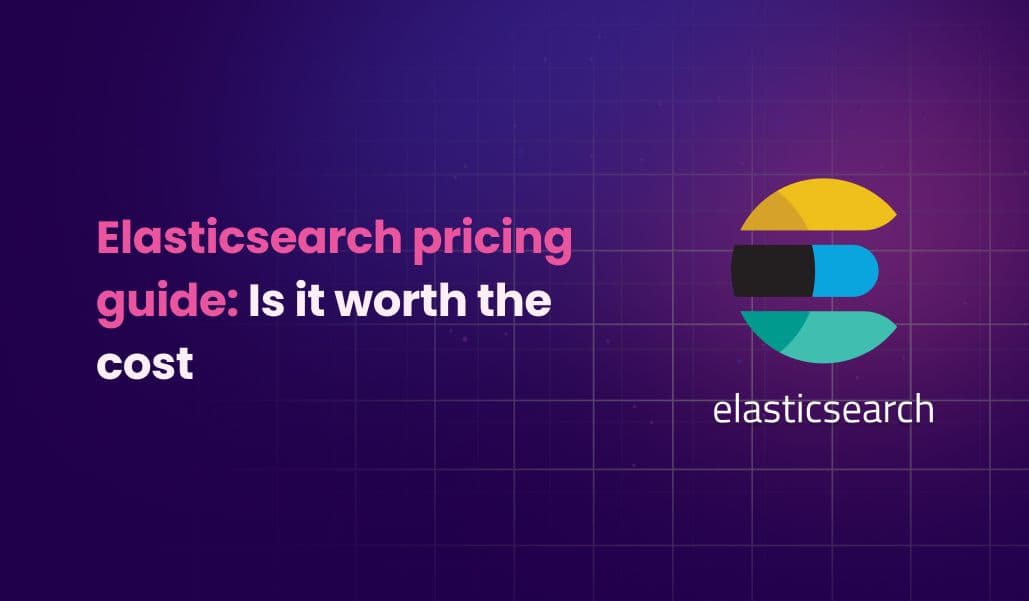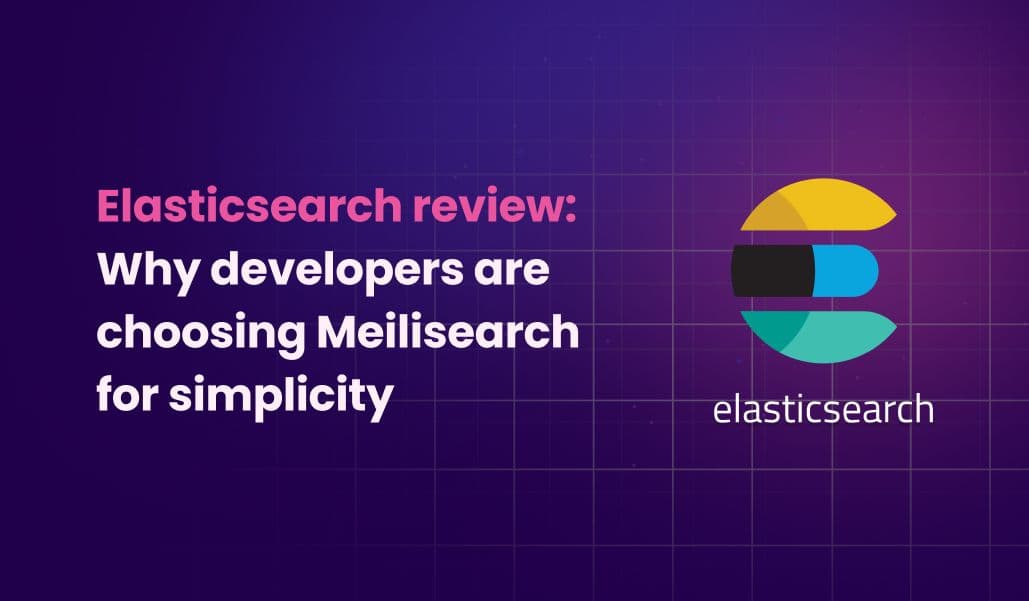Most personalized search experiences are a lie
Learn what true search personalization looks like – and how to implement it without bloated, ineffective solutions.

We’ve been handed an exciting dream—and it hasn't quite lived up to expectations.
With the rapid growth of AI, big names like Google promised a revolution in how we discover information.
Search was meant to become faster, smarter, and more tailored to us.
Yet, here we are, still wading through unrelated suggestions and one-size-fits-all recommendations.
Personalized search? Perhaps more like personalized guesswork.
So, what went wrong? Let’s explore it together.
What most "personalized" search experiences actually do
Every rose has its thorn. And so do personalized search engines.
What’s sold under the sweet sauce of “customization” is often just a simple data retrieval.
And even then, chances are you won’t get what you’re looking for.
Why does this happen?
Here are a few reasons:
Reason #1: Words set in stone
Personalized search engines often follow a hard-coded word order, preconditioning the final results.
The Prozis e-commerce company search engine relies on this rule to search for products.
For instance, if we search for “nut butter for keto diet,” the results are ordered as “hazelnut butter,” “pistachio butter,” and “almond butter.”

Image Source: Prozis
But here’s the problem.
Hazelnut and pistachio butters, listed as first and second, are not keto-friendly, while almond butter, which actually is ketogenic, comes in third.
What you see here is relevance ranking.
The order of words predetermines and prioritizes the search results that closely match the query.
Yet, something crucial is missing in this case: user intent.
The next point on our list is about the same issue.
Reason #2: All eggs in one basket
Oftentimes, it’s not the word order that creates stumbling blocks in personalized search.
It’s an oversimplified user segmentation.
Personalized search engines often group users into broad categories (e.g., “tech shoppers”, “outdoors enthusiasts”).
And let’s be honest, it’s easier that way.
However, the outputs we get are inaccurate and irrelevant recommendations.
After all, there are nuances in everything. Let’s say two people are outdoor enthusiasts; one loves hiking, but the other hates getting on the trail and prefers luxurious glamping.
Both belong to the same group. But are they really the same?
Streaming services are guilty of this, and Netflix is a good example.
Upon registration, you must choose three movies/TV shows you like.

Image Source: Netflix
If you go for a selection of medical shows and series about law and law enforcement, guess what you’ll get.

Image Source: Netflix
But do these three picks truly reflect *all *of your viewing preferences?
Hardly.
Yes, you might like some shows about law enforcement, but you might also hate watching Dexter—a crime show—because it’s too gruesome.
That’s not all, though.
If you look closer at the shows suggested in the image above, you’ll see that some of them have been around for a while (like House, Prison Break, or Suits), and you may have seen them already.
Thus, the Netflix algorithm is also guilty of the filter-bubble effect, meaning you won’t be exposed to anything except what you already engage with.
Reason #3: Money talks
Personalization implies prioritization.
In our case, the prioritization of the user’s search intent and their interests.
Most search engines claim they honor this priority.
But not before they honor their obligations to the advertisers.
Many online marketplaces follow this logic, and AliExpress is a good example.
When you search for a product, the platform gives you various options, but not until it shows you two rows worth of paid ads.
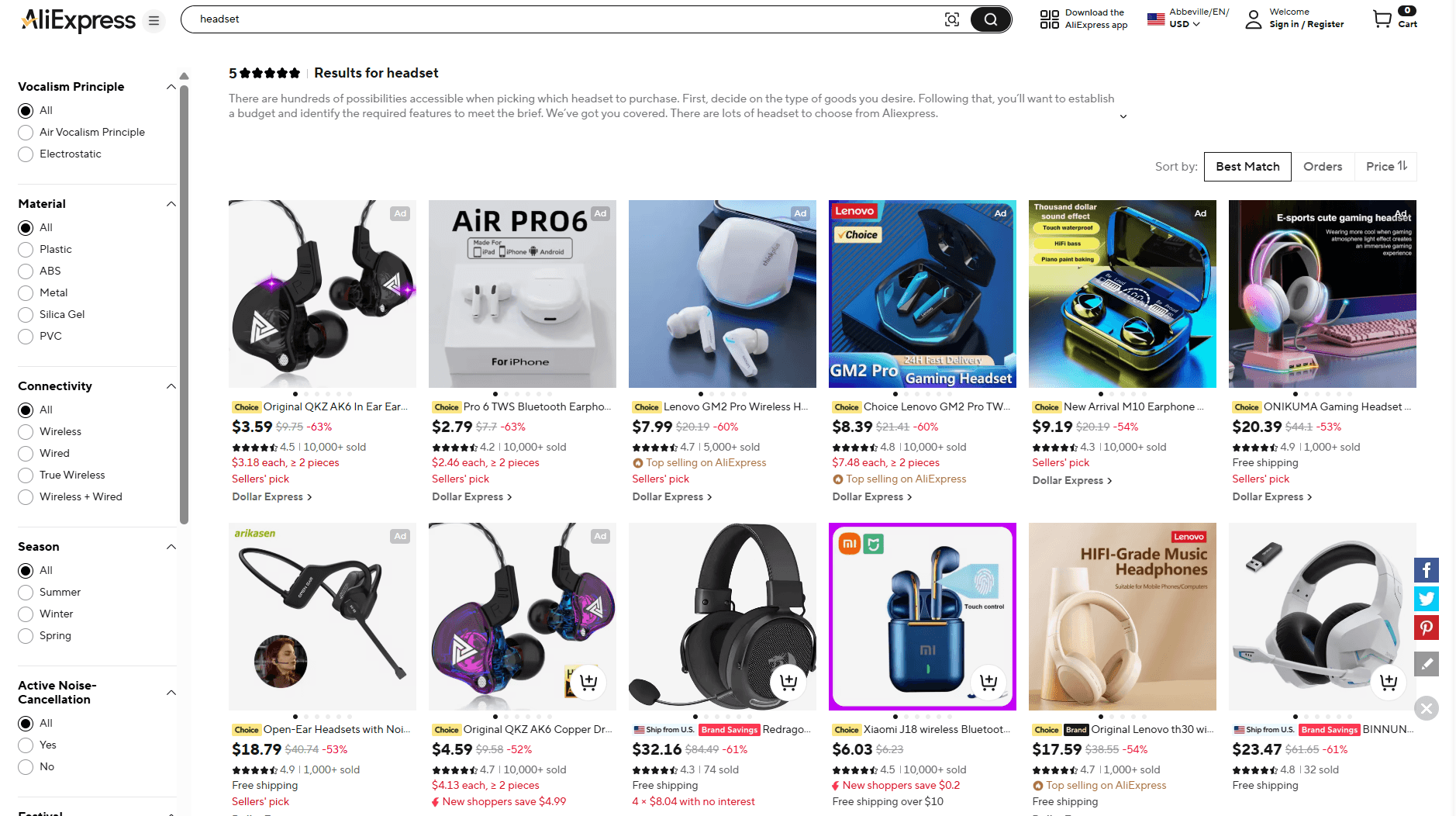
Image Source: AliExpress
To be fair, marketplaces like AliExpress need to work with advertisers to sustain their business.
However, overrunning the search results with ads contradicts AliExpress’s claim about curating “a selection of products tailored specifically to you,” as they claim at the bottom of their homepage.
You can’t expect a user to be satisfied with product recommendations after scrolling through several rows of ads.
That’s just not what personalization is about.
What is true personalization?
The answer seems simple: personalization is about deeply understanding the user's needs.
The actual matter is, of course, more complex.
The biggest obstacle to personalized search is analyzing massive amounts of user data to deliver the most relevant search results.
Brands and marketplaces heavily rely on AI for this task, but it’s not always the answer.
After all, AliExpress uses AI to personalize search results, but its system is far from perfect.
AI can be a solid foundation for personalizing search results, but this foundation only maintains its integrity if it stands on the following five pillars.
Pillar #1: Intent-based personalization
Personalization happens when the user and the service provider have a complete rapport.
In our case, the key to building this rapport (since a search engine is a machine) lies in Natural Language Processing, or NLP.
NLP algorithms use semantic network models to understand user intent, which makes personalization possible.
How does it work?
Essentially, semantic search targets the context behind words and analyzes structured data to understand the semantic meaning of the query.
Amazon’s A9 search engine is probably the best example of this model in action.
Let’s take the key phrase *book emotional intelligence toddler. *
The keyword here is toddler, meaning we are not searching for an emotional intelligence guide for adults.
The search engine picks up on that and shares exactly what we need: several book options for kids to read.
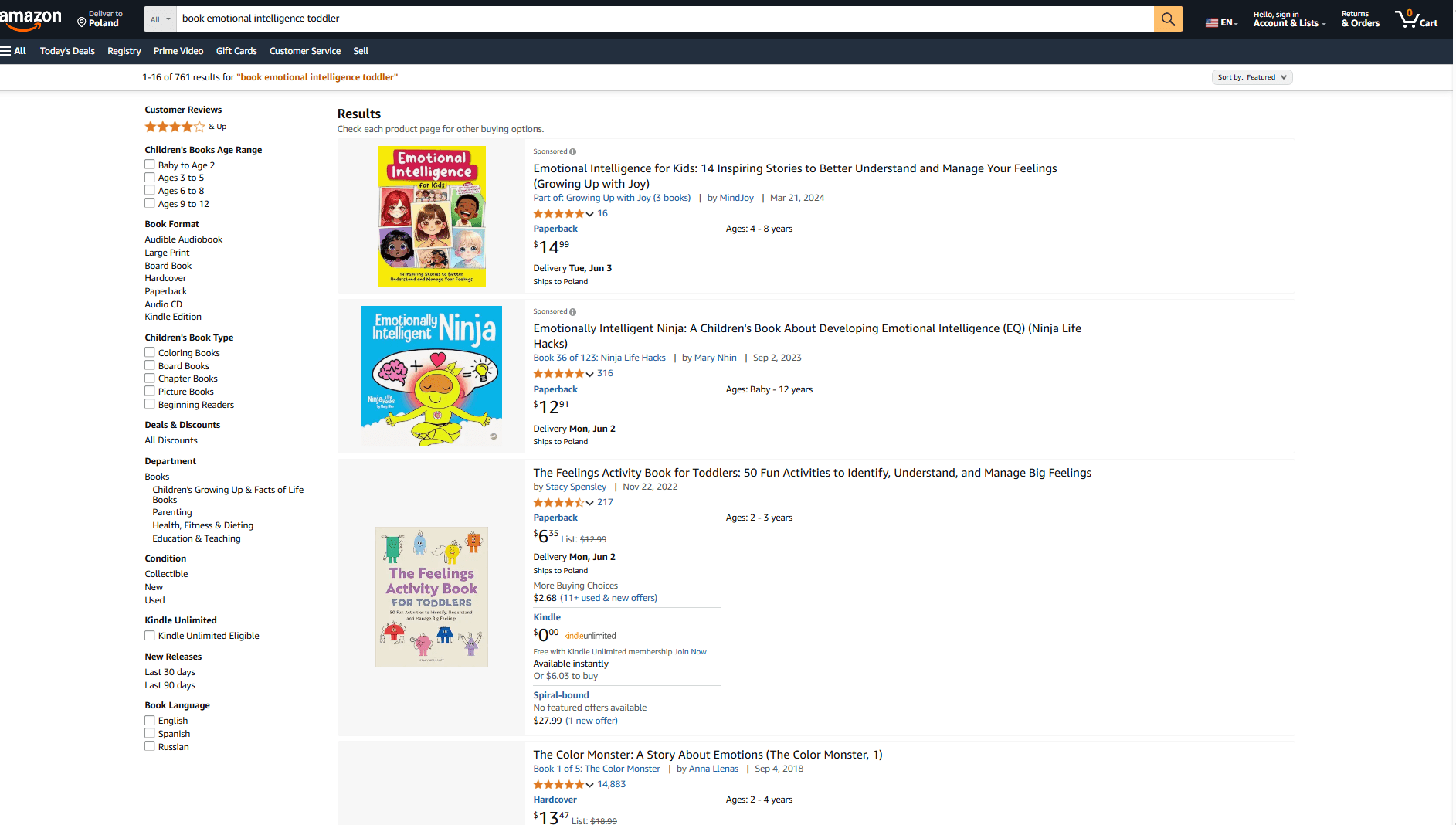
Image Source: Amazon
We also tested our previous peanut butter example, and Amazon’s search engine gave only keto-friendly products as top results.

Image Source: Amazon
But do you still get personalized recommendations if there’s a typo in your query?
Let’s talk about it next.
Pillar #2: Typo tolerance
It’s hardly a pleasant experience to have to retype your query simply because you made a typo and got the wrong results.
Search engines use the latent semantic indexing method of information retrieval to minimize such occurrences.
LSI is robust against typos because it relies on semantic meaning to understand hidden concepts.
And that’s precisely what you need, especially if you have a wide-range product offering.
Minipouce is a good example.
Below, we intentionally made a typo in the word *ring *but still got relevant results.

Image Source: Minipouce
Many products in the company’s catalog have similar names, which only increases the chance of making a typo. So Minipouce used Meilisearch’s open-source version to optimize the product search for relevant results every time.
Pillar #3: Real-time adaptive learning
The results for a query should change dynamically during the interaction between the user and the search engine rather than simply relying on static filters.
Why?
Interaction of any kind is never static.
A user’s preferences and behavior may change while searching for the right product or information, and true personalization must take this into account.
That’s why it’s essential for a search engine to employ real-time adaptive learning. See how it works in a Meilisearch-powered search engine below.

How does it work?
It’s a complex process, but we can break it down to three main steps:
- Collecting and analyzing user data. A search engine first collects information on user searches and related interactions to lay the ground for future personalization.
- Adjusting the algorithm. The collected data and its analysis impact the ranking, related searches, and other search algorithm elements to provide the results based on particular intent.
- Adapting the results. As a user further interacts with a search engine, it adapts its behavior to generate and prioritize relevant results to suit the user’s changing preferences.
Of course, user behavior is not the only factor impacting the relevance of search results.
The content a search engine is working with also matters.
Consequently, so does the information retrieval method it uses.
Let’s talk about it next.
Pillar #4: Correct information retrieval method
Information retrieval (IR) refers to the process of finding and retrieving relevant data.
This process consists of three steps, which you can see below.
- Step #1: Analyzing unstructured data, such as web pages and text documents.
- Step #2: Indexing the data to make it structured, then processing the query to match the index.
- Step #3: Ranking the query results based on relevance.
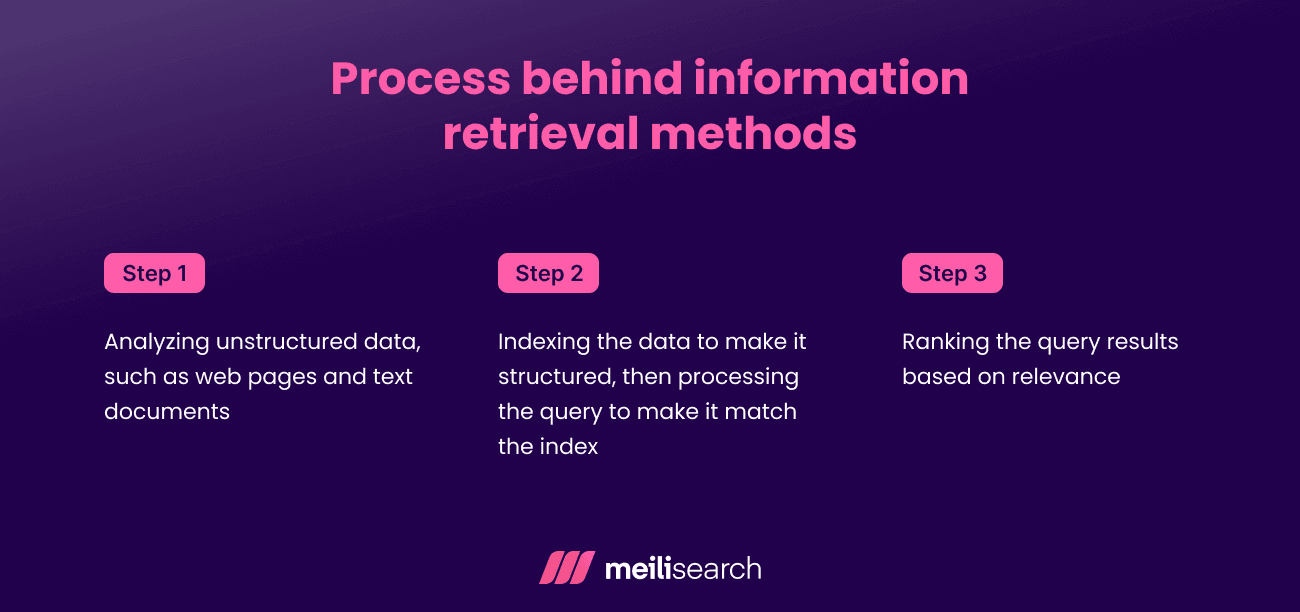
You are already familiar with some IR methods, such as LSI mentioned above.
And, as you may have noticed, they interpret the content a bit differently.
Semantic search focuses on a query’s intent and contextual meaning, which makes it particularly great for web search.
LSI is a variation of semantic search that finds hidden concepts in words and documents. Thus, it’s ideal for tasks such as document clustering.
There’s also neural search that employs deep neural networks (DNNs) to understand the context behind a search query.
Neural search differs from the above methods in its complexity. It explores contextual relations on a more nuanced level, which makes it better for search engines involving conversational queries.
There is also hybrid search, a blend of all aforementioned models, which is often used in enhanced information retrieval systems.
What about more real-life uses for each of these IR methods?
Here are some suggestions.
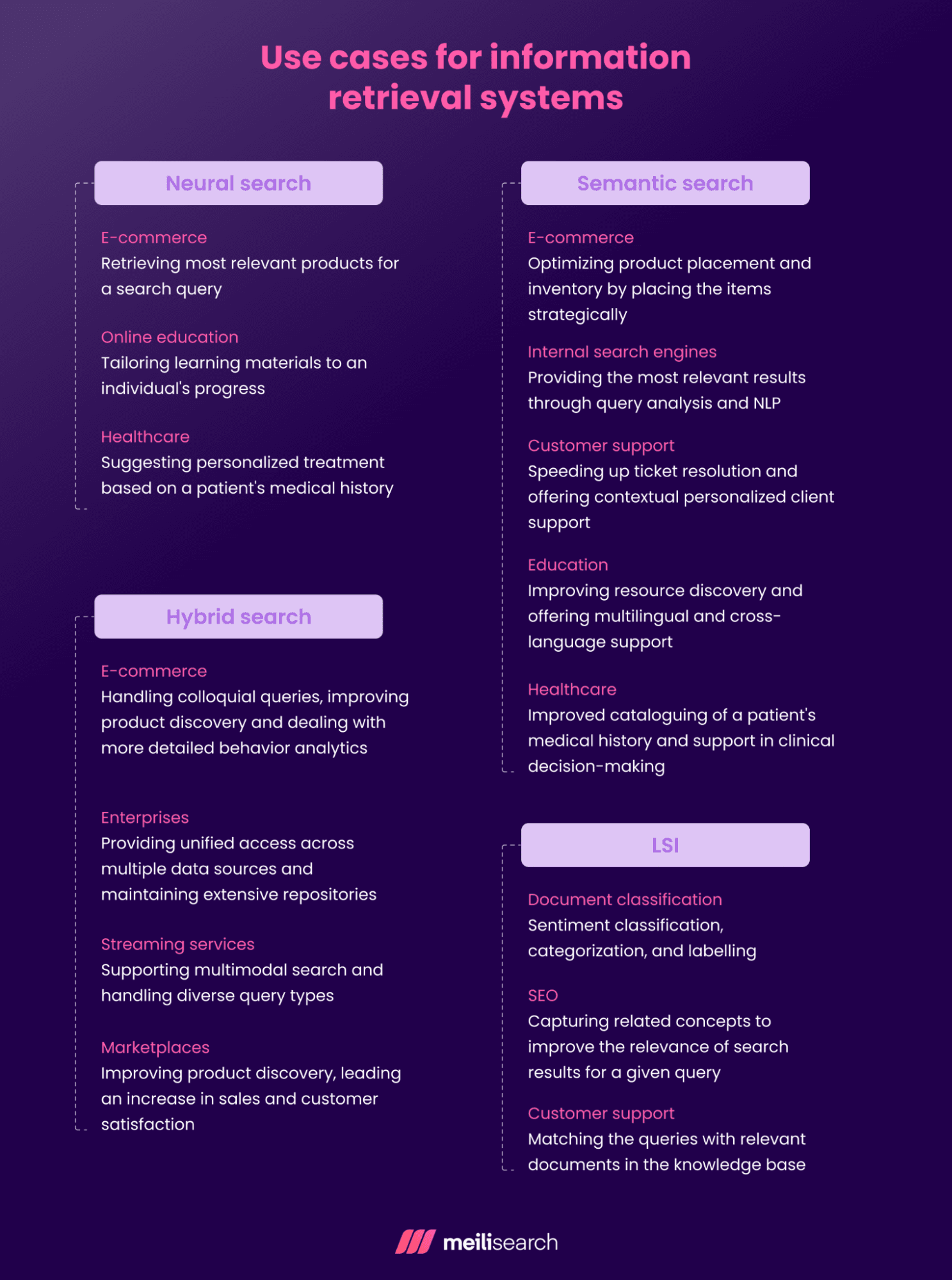
These are, of course, just a few examples, as IRs can have way more applications.
But there’s one thing that unites all of them.
No matter what IR a search engine uses, it deals with personal user data.
And that calls for privacy concerns.
Let’s talk about that next.
Pillar #5: Respect for privacy
It’s no secret that AI-powered search engines rely on machine learning to provide the most accurate results.
This, of course, implies that they analyze data from millions of searches and have to examine user data.
But how can you ensure privacy while maintaining the search engine’s ability to provide top-tier personalization?
The following strategies help get this job done.
- Data encryption: protecting the data from third parties by encrypting it at rest and in transit.
- Access controls: introducing multi-factor authentication and role-based permissions.
- Limited data sharing: regulating data sharing with third parties.
- Federated learning: training AI to learn from new system updates instead of raw user data.
- Effective anonymization: preventing user de-anonymization by hiding personally identifiable information.
The key point, of course, is to ask for user permission to use any data they share and, if they change their mind later, to give them complete control over how their information is processed.
Build a strong foundation for personalized search
True personalization isn’t just about serving the results that seem tailored.
Most so-called personalized searches fall short because they prioritize static logic, broad segmentation, and advertiser interests instead of user intent.
But not all is lost.
Grounding personalization in NLP, using correct information retrieval methods, and, most importantly, respecting privacy are the keys to delivering search experiences that truly matter.
We are here to support you in achieving true personalization
Meiliesarch is a dev-friendly search solution that provides results in under 50 milliseconds while offering SOC2 compliance and end-to-end encryption.
At Meilisearch, we know that real personalization is a journey, not a checkbox. That’s why we’re actively working on advanced personalization features to help every user find exactly what they need, faster than ever.
Ready to transform your users’ search experience?

